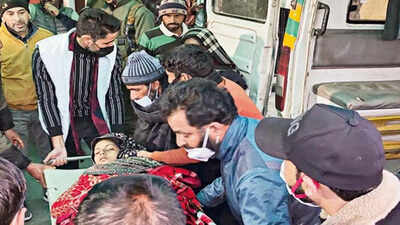Rajouri health scare: 38 patients discharged after recovery | Jammu News

JAMMU: Thirty-eight patients from Badhaal village in Kotranka in J&K’s Rajouri district — hospitalised with symptoms of a mystery illness that claimed 17 lives since Dec 2024 — were discharged following recovery, after being examined by teams of doctors from PGIMER Chandigarh and AIIMS New Delhi, officials said, adding there were no current hospitalisations.
This was revealed during a high-level meeting chaired by J&K chief secretary Atal Dulloo on Thursday, attended by officials from health and police departments besides the directors of AIIMS New Delhi and PGIMER Chandigarh; ICMR DG; director of Indian Institute of Toxicology, Lucknow; CFSL director; experts from National Institute of Virology and Defence Research & Development Establishment, Gwalior, and other institutes.
The main objective of the meeting was to discuss measures to safeguard lives in Badhaal and identify the cause of the mass deaths. CS Dulloo urged officials to not let their guard down and advised them to collect samples of locally used fertilisers, pesticides and insecticides to identify the root cause of the deaths. He also asked for augmentation of facilities in local hospitals to ensure the institutes were well-equipped to handle any such eventuality in future.
CS Dulloo directed an audit of J&K’s health facilities to examine the requirements of more ICU beds, oxygen plants and isolation wards, in addition to making available specific drugs and specialists at these institutes. He requested AIIMS New Delhi to extend support in enhancing the capacity of local medics for dealing with such calamities by sending in doctors for specialised training.
H&ME secretary Dr Syed Abid Rashid Shah informed that every measure had been adopted to isolate the families and provide them food and water after testing.
Jammu divisional commissioner, meanwhile, said it was ensured that no water or eatables had been exchanged between affected families as they had been evacuated from their homes and kept under continuous surveillance. Currently, 363 members of 60 families remained quarantined, with their 592 domesticated animals being tended to by officials from the animal husbandry department.







